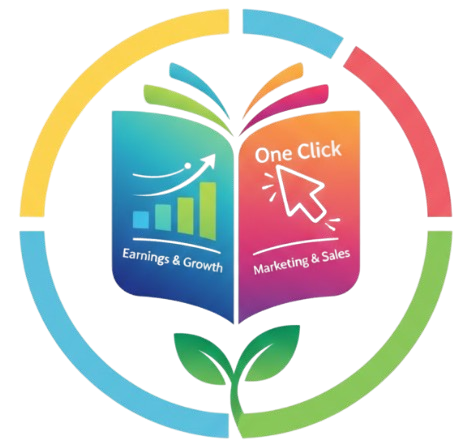Self-publishing has completely changed how authors share their books with the world. Today, you don’t need a big publishing house to get your story out there — you just need a good platform and some determination. Among all the platforms, Amazon Kindle Direct Publishing (KDP) stands out as one of the most popular. But is it really the best? Or do other platforms offer better opportunities for authors?
Let’s break this down in a simple, human way — no confusing jargon, no over-the-top claims — just honest facts, friendly comparisons, and real-world insight.
What is KDP (Kindle Direct Publishing)?
KDP is Amazon’s self-publishing platform that allows writers to publish both eBooks and paperbacks (and even hardcovers) for free. When you publish on KDP, your book becomes available on Amazon, the world’s largest online bookstore. That means millions of potential readers can find your book with just a search.
You get to keep control over your content, set your price, and earn royalties up to 70% for eBooks and 60% for paperbacks (minus printing costs).
But here’s the catch — Amazon isn’t the only place where readers buy books. Other platforms like IngramSpark, Lulu, Draft2Digital, and Smashwords also give authors great tools and different kinds of exposure.
So how do they all stack up? Let’s take a look.
Why Authors Love KDP ❤️
If you’re new to self-publishing, KDP feels like a warm welcome. It’s simple, user-friendly, and fast. You can upload your manuscript, add a cover, write a short description, and hit publish — all within a few hours.
Here’s what makes KDP stand out:
✅ Massive Reach – Your book instantly becomes available to millions of readers on Amazon. That’s huge.
✅ Free to Publish – You don’t have to pay anything upfront.
✅ Fast Publishing – Books often go live within 24–72 hours.
✅ Royalties Up to 70% – You earn a fair share when your book sells.
✅ KDP Select Program – Lets you offer your eBook on Kindle Unlimited (subscription service). This can increase your visibility and earnings.
However, there are some downsides too…
Limitations of KDP ⚠️
While Amazon KDP is convenient, it’s not perfect.
❌ KDP Select Exclusivity – If you enroll in KDP Select, your eBook can’t be sold elsewhere for 90 days. That limits your reach.
❌ Amazon Focused – Your book mainly sells on Amazon; it’s not automatically distributed to other bookstores.
❌ High Competition – With millions of books already on Amazon, standing out can be hard.
❌ Printing Costs – Paperbacks have fixed printing fees that can reduce your profit.
Now, let’s see what other platforms offer that KDP doesn’t.
Exploring Other Self-Publishing Platforms ✨
There are a number of platforms where authors can publish their work. Each one has its own style, benefits, and audience. Here are some of the top contenders:
| Platform | Best For | Distribution | Cost | Royalties | Key Features |
|---|---|---|---|---|---|
| IngramSpark | Print & wide distribution | Worldwide bookstores & libraries | Setup & revision fees | ~45–70% | Professional printing & bookstore reach |
| Lulu | Print-on-demand & customization | Amazon + other stores | Free (some premium services paid) | 50–80% | Flexible formats, calendars, & photo books |
| Draft2Digital | eBook distribution | Apple Books, Kobo, Barnes & Noble | Free | 60%–70% | Auto-formatting, no exclusivity |
| Smashwords | eBooks | Many online retailers | Free | 60%–80% | Detailed metadata & wide reach |
| Blurb | Photo books & magazines | Blurb store, Amazon | Free | Varies | Ideal for image-heavy projects |
KDP vs IngramSpark: A Direct Comparison 🔍
-
Reach:
KDP dominates online sales through Amazon, but IngramSpark wins when it comes to bookstore and library access. -
Cost:
KDP is free. IngramSpark charges small setup and revision fees (though they often run promotions for free uploads). -
Control:
Both give you full creative control, but IngramSpark allows better print quality and bulk orders. -
Profit:
Royalties can be slightly lower on IngramSpark due to distribution fees, but it’s worth it for authors who want a physical presence.
If your dream is to see your book in local bookstores, IngramSpark might be your friend. If you want massive online visibility, KDP wins.

KDP vs Lulu: Customization vs Simplicity 🛠️
-
Ease of Use:
KDP is simple and beginner-friendly. Lulu takes a bit more setup time but allows more creative control, especially for unique print projects. -
Formats:
Lulu supports a wider range of book types (like cookbooks, planners, photo books, etc.). -
Distribution:
Lulu distributes to Amazon, Barnes & Noble, and their own Lulu store.
For authors making journals, notebooks, or planners, Lulu can be better than KDP because of its flexible design options.
KDP vs Draft2Digital: The Wide Distribution Battle 🌍
-
KDP Strength: Best visibility on Amazon.
-
Draft2Digital Strength: Puts your book everywhere else — Apple Books, Kobo, Barnes & Noble, and many international stores.
-
Royalties: Both offer 60–70%, depending on price.
-
Ease: Draft2Digital automatically formats your book beautifully.
If you want wider eBook reach beyond Amazon, you can even use both — publish your eBook on KDP and use Draft2Digital for non-Amazon platforms (just don’t enroll in KDP Select).
KDP vs Smashwords: The Old School Distributor 📖
Smashwords has been around longer than most. It’s a pioneer in eBook self-publishing.
However, Draft2Digital acquired Smashwords in 2022, merging both into a stronger platform.
Smashwords was known for its wide distribution network and detailed control over pricing and metadata. If you love data, analytics, and having full control, this one’s worth checking.
KDP vs Blurb: For the Visual Creators 🎨
Blurb is perfect for artists, photographers, or designers. You can create magazines, photo books, and portfolios that look premium.
But — it’s not ideal for traditional novels or text-heavy books. That’s where KDP or IngramSpark perform better.
Royalty Comparison Table 💰
| Platform | eBook Royalty | Print Royalty | Notes |
|---|---|---|---|
| KDP | 35% or 70% | 60% minus printing | Best for online exposure |
| IngramSpark | 45–70% | 45–70% | Best bookstore reach |
| Lulu | 50–80% | 50–80% | Great for custom books |
| Draft2Digital | 60–70% | N/A | Wide eBook distribution |
| Smashwords | 60–80% | N/A | Legacy distributor |
| Blurb | Varies | Varies | Best for creative visual books |
Which Platform is Best for You? 🤔
It depends on what kind of author you are and where you want your book to shine.
-
If you’re a beginner → Go with KDP. It’s free, easy, and has the largest audience.
-
If you want bookstores and libraries → Choose IngramSpark.
-
If you’re making journals or planners → Try Lulu.
-
If you want your eBook everywhere → Use Draft2Digital.
-
If you create visual books → Go with Blurb.
Some smart authors even combine platforms: they use KDP for Amazon, IngramSpark for print distribution, and Draft2Digital for non-Amazon eBooks. This way, they get the best of all worlds. 🌎
Pro Tips for Self-Publishers 💡
⭐ Don’t rely only on Amazon ads. Promote your book through social media, book blogs, and newsletters.
⭐ Invest in a good cover design. Readers judge by covers, even if we pretend they don’t.
⭐ Edit your book professionally. Typos can kill credibility fast.
⭐ Use multiple income streams. Try different platforms to diversify.
⭐ Keep learning. The self-publishing world changes every year — stay updated.
Simple Pros & Cons Overview
| Platform | Pros | Cons |
|---|---|---|
| KDP | Free, huge reach, fast publishing | Limited to Amazon, high competition |
| IngramSpark | Bookstore access, professional printing | Fees, complex setup |
| Lulu | Customizable, supports planners | Slower processing |
| Draft2Digital | Wide eBook reach, easy to use | No print option |
| Smashwords | Detailed control, analytics | Older interface |
| Blurb | Best for images, creative books | Expensive for bulk |
A Quick Real-Life Example ✍️
Imagine Sarah, a first-time author. She publishes her first romance novel on KDP. It starts to get sales from Amazon. Later, she decides to publish her paperback version on IngramSpark to reach libraries and local bookstores.
Meanwhile, she uploads her eBook to Draft2Digital for Apple Books and Kobo readers. Now Sarah earns from multiple sources — and that’s how smart indie authors build a sustainable career.
FAQs ❓
Q1: Can I use more than one platform at a time?
Yes, you can — just avoid enrolling in KDP Select if you want to distribute your eBook elsewhere.
Q2: Is KDP free to use?
Absolutely. KDP doesn’t charge for publishing. You only pay printing costs when a paperback sells.
Q3: Which platform gives the highest royalties?
Lulu often provides higher percentages, but KDP’s huge reach usually results in more total sales.
Q4: Which platform is best for beginners?
KDP is hands down the easiest for new authors. It’s quick, free, and intuitive.
Q5: Can I switch platforms later?
Yes, you can remove your book from one and republish on another, but be mindful of exclusivity terms like KDP Select.
Final Thoughts 🌟
Every platform has its strengths. KDP is unbeatable in reach and simplicity, but others like IngramSpark and Lulu offer flexibility and broader distribution.
The best approach? Don’t limit yourself. Try combining platforms strategically. Start with KDP for Amazon visibility, then expand your reach using others once you’re confident.
At the end of the day, it’s not just about where you publish — it’s about how you connect with readers, build your brand, and keep learning along the way.
Remember, your words deserve to be read — no matter which platform you choose. ❤️




